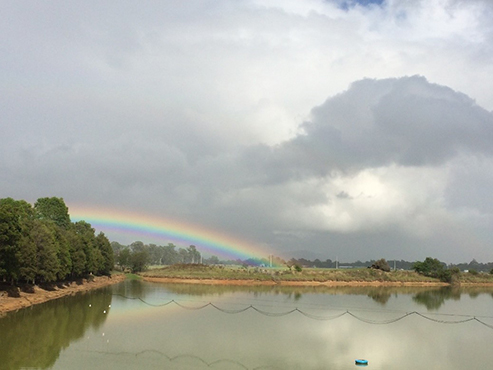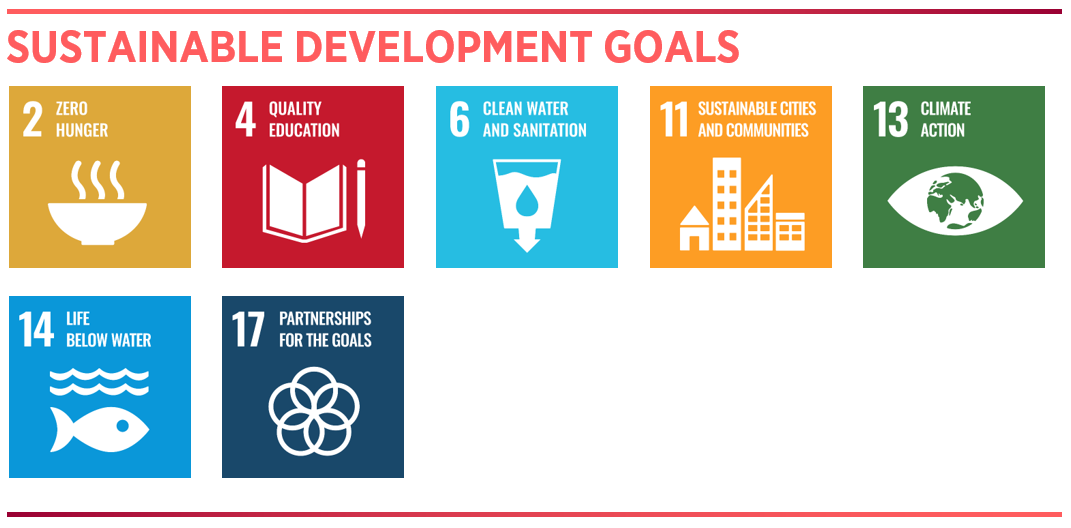Water Cycle Management

Water cycle management ('catchment' or 'watershed management') incorporates increasing water use efficiency, promoting conscious water usage, and substituting alternative water resources for non-potable (non-drinking) water use needs. All building and refurbishments incorporates Water Efficiency Labelling and Standards (WELS) (opens in a new window) in fittings and appliances. Alternative water resources for urban and peri-urban landscapes include water recycling from sewerage, harvesting and treating urban stormwater, and capturing rainwater from rooftops, to reduce the impact on local ecosystems and wildlife whilst benefiting human health and welfare. Another important dimension is incorporating Water Sensitive Urban Design (WSUD) as a key component of precinct developments.
Overview
Key Strategies Emerging
Building and refurbishment is guided by internal Architectural, Hydraulic and Fitting Standards which reference water conservation and sustainable design, with all general use (non-lab) taps, toilets and appliances consistent with the Water Efficiency Labelling and Standards (WELS) (opens in a new window) scheme.
Water recycling, to provide non-potable water resources from sewerage and stormwater, is critical for our responses to water security due to climate change, rainfall variability, and the conservation of drinking water resources. Water Sensitive Urban Design is a key design element for development which responds to managing the water cycle elements within the urban landscape.
Management Initiatives Underway
Recycled water and harvested stormwater are used extensively on Hawkesbury campus for agricultural productivity, campus amenity of grounds and ovals, and bushfire mitigation. The recycled water is supplied under agreement with Sydney Water Corporation (opens in a new window).
Rainwater is used for toilet flushing and irrigation in some buildings of Penrith, Parramatta, and Campbelltown campuses. There is further opportunity for local capture of rainwater, and an ongoing initiative will be to review design options for capture, storage in tanks and local reuse.
Water efficient fixtures and equipment is a standard component of architectural guidelines for both new Green Star rated buildings and building refurbishments across all campuses.
Related Living Lab Initiatives
Compliance Requirements and Risks
The use of non-potable water resources, including recycled water from sewerage, and harvested urban stormwater are underpinned by national risk management guidelines and Western's 'Recycled Water Risk Management Plan (PDF, 3098.8 KB) (opens in a new window)'. The identification of uses ‘fit for purpose’ reflect combinations of appropriate treatment trains, and suitable storage and application.
Trends and Interdependencies
The use of recycled water is a key buffering strategy for the effects of climate change on rainfall variability.
The availability of recycled water resources depends upon partnership with Sydney Water Corporation (opens in a new window) and collaborative risk management. The harvesting and use of stormwater and rainwater for landscape or building uses depends upon appropriately designed and managed harvesting, storage, treatment, and monitoring.
Another key interdependency is with pollution and plastics transported via stormwater to our river systems and ocean circulation.
Targets
| 2025 | 100% garden on stormwater Hawkesbury. |
|---|---|
| 2026 | 60% water use from non-potable sources on all campuses |
Initiatives and Case Studies
Hawkesbury Water Recycling Scheme
A long standing Living Lab is the Hawkesbury Water Recycling Scheme, incorporating the supply and use of approximately 500 ML per annum of recycled water from Sydney Water Corporation (opens in a new window), along with harvesting approximately 250 ML per annum of stormwater from the local catchment. These water resources go through treatment trains and permitted uses as outlined in the Water Recycling Risk Management Plan. Stormwater is used for campus irrigation, with recycled water used for irrigation of agricultural pastures and playing fields. A range of research and adaptive management of the scheme has been documented in journal articles, with an important developing research collaboration with Sydney Water monitoring the stormwater treatment wetlands consistent with the NSW Environment Protection Authority (opens in a new window) (EPA) Nutrient Offset Program.
Rainwater Harvesting
Building upon rainwater capture in some buildings across our campuses, a systematic design is underway to identify the potential areas for increasing the capture and reuse of rainwater from building rooftops. This will include identifying available rooftop catchment areas, estimating rainwater volumes which could be captured and stored in tanks, and local reuse options such as toilet flushing or garden irrigation.

Mobile options:


